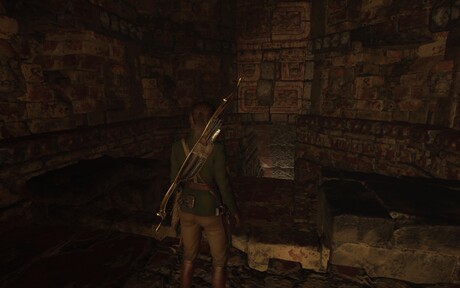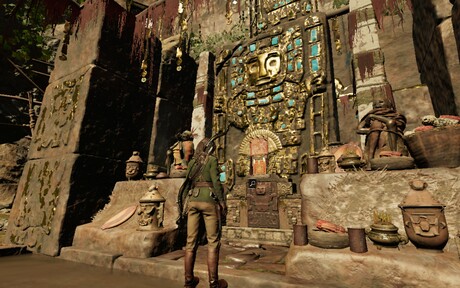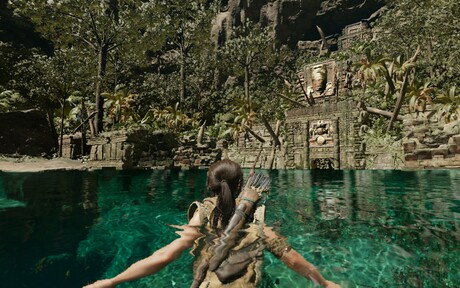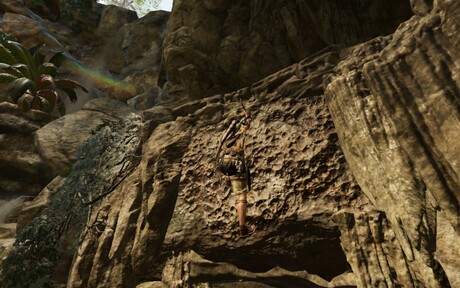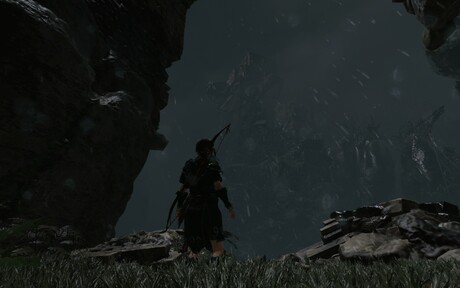List items
Items from the current list are shown below.
Blog
All items from November 2020
1 Nov 2020 : Occasional Tomb Raider update #
I've been keeping up-to-date with the Tomb Raider series, completing all of the games and raiding all of the tombs, for the last 17 years (yes, you read that right). Not all of the games in the series have made it on to my blog, but as both the games and the gaps between them have grown longer, it's given me more time to reflect on the journey.
The first game was released in 1996 but my first blog post on the topic wasn't until 2013, which was already a decade after my first Tomb Raiding experiences at university. By then I'd already completed fourteen games. More recently in 2017 I completed Rise of the Tomb Raider. This afternoon I reached the (ever-rising) summit once again by completing Shadow of the Tomb Raider, the latest in the series. As far as I'm aware there's no public plan or date for the next release, so I guess I'll get a bit of a break before the next one.
I like to categorise the series into six chunks:
My feelings on each of these are mixed. Obviously I loved the original series. Even though I played them in the wrong order and well past their release dates, I loved the exactness of the game play (walk to edge, one jump back, run and jump). It was also mesmerising for me to see how they managed to achieve so much within the constraints of the technology. These were the "Integer" games with rectilinear grid-based maps. Yet the designers managed to harness them to represent not just tombs but also jungles, deserts, stately homes, cathedrals, alien spaceships and crumbling Scottish castles. They represent a masterclass in squeezing atmosphere from a very constrained set of tools. No game before managed to capture the magic of walking from a tight corridor into a huge cavernous room quite like these games.
Angel of Darkness stands on its own. It almost sank the franchise because of the terrible reviews. It certainly had its problems but I loved it in spite of them. It was the first of the games to really try to include a serious story, and the Louvre is a handsome building to break into. I would have loved to find out where Core Design wold have taken it if Eidos hadn't given the licence to Crystal Dynamics.
The first reboot was enjoyable but somewhat unmemorable for me. It was a worthy reboot, capturing much of the original's atmosphere, but the stories fell halfway between the original and the Angel of Darkness approach: trying to be serious but ultimately a bit too slick. The game play did, however, manage to bridge the divide between the very exacting original games and the more free-flowing second reboot. If the original games were the Integers, these games were a shift to the Rationals.
And now the second reboot. To complete my analogy with number systems, these games are the Reals. They lack any sort of exactitude, and it never feels like you're entirely in control. On the other hand, this makes them feel far less digital and much closer to real life. The design, artwork and effects are beautiful. The stories are supposed to be tales of growth and coming of age, but I'm not really sure they quite succeed. Others have claimed that the attempt at serious narrative never quite gels with the absurd situations and gameplay. And I think I agree with that criticism. Still, they captured my interest enough for me to pour many hours of my life into completing them, and it's possible to enjoy the game while still having to separate the story from the action.
Shadow of the Tomb Raider, the game I've just completed, has lost almost all of the levity of the original games. But when you look at it from a technical or graphical perspective, it's an astonishing piece of work. The lighting, architecture, flora and forna are phenomenal. The small touches of interaction (Lara's hands pressing against the walls, foliage moving aside as you walk through them, birds scattering, rainbows appearing in the spray of a waterfall) make things feel very vivid and alive. On the other hand interactions with other characters are less convincing. If I'm honest, solitude is part of the appeal of the games, and if the village hubs had been removed leaving only the main story and challenge tombs, I'd have been quite satisfied.
So, here's my full list of completed Tomb Raider games. Shadow of the Tomb Raider is the last in the trilogy, so I wonder where it will go from here.
Comment
The first game was released in 1996 but my first blog post on the topic wasn't until 2013, which was already a decade after my first Tomb Raiding experiences at university. By then I'd already completed fourteen games. More recently in 2017 I completed Rise of the Tomb Raider. This afternoon I reached the (ever-rising) summit once again by completing Shadow of the Tomb Raider, the latest in the series. As far as I'm aware there's no public plan or date for the next release, so I guess I'll get a bit of a break before the next one.
I like to categorise the series into six chunks:
- Original Game (from the very first Tomb Raider all the way through to Chronicles)
- Angel of Darkness
- First reboot (Legend, Anniversary, Underworld)
- Interlude (Guardian of Light, Temple of Osiris)
- Interlude (Relic Run, Go)
- Second reboot (Tomb Raider, Rise, Shadow)
My feelings on each of these are mixed. Obviously I loved the original series. Even though I played them in the wrong order and well past their release dates, I loved the exactness of the game play (walk to edge, one jump back, run and jump). It was also mesmerising for me to see how they managed to achieve so much within the constraints of the technology. These were the "Integer" games with rectilinear grid-based maps. Yet the designers managed to harness them to represent not just tombs but also jungles, deserts, stately homes, cathedrals, alien spaceships and crumbling Scottish castles. They represent a masterclass in squeezing atmosphere from a very constrained set of tools. No game before managed to capture the magic of walking from a tight corridor into a huge cavernous room quite like these games.
Angel of Darkness stands on its own. It almost sank the franchise because of the terrible reviews. It certainly had its problems but I loved it in spite of them. It was the first of the games to really try to include a serious story, and the Louvre is a handsome building to break into. I would have loved to find out where Core Design wold have taken it if Eidos hadn't given the licence to Crystal Dynamics.
The first reboot was enjoyable but somewhat unmemorable for me. It was a worthy reboot, capturing much of the original's atmosphere, but the stories fell halfway between the original and the Angel of Darkness approach: trying to be serious but ultimately a bit too slick. The game play did, however, manage to bridge the divide between the very exacting original games and the more free-flowing second reboot. If the original games were the Integers, these games were a shift to the Rationals.
And now the second reboot. To complete my analogy with number systems, these games are the Reals. They lack any sort of exactitude, and it never feels like you're entirely in control. On the other hand, this makes them feel far less digital and much closer to real life. The design, artwork and effects are beautiful. The stories are supposed to be tales of growth and coming of age, but I'm not really sure they quite succeed. Others have claimed that the attempt at serious narrative never quite gels with the absurd situations and gameplay. And I think I agree with that criticism. Still, they captured my interest enough for me to pour many hours of my life into completing them, and it's possible to enjoy the game while still having to separate the story from the action.
Shadow of the Tomb Raider, the game I've just completed, has lost almost all of the levity of the original games. But when you look at it from a technical or graphical perspective, it's an astonishing piece of work. The lighting, architecture, flora and forna are phenomenal. The small touches of interaction (Lara's hands pressing against the walls, foliage moving aside as you walk through them, birds scattering, rainbows appearing in the spray of a waterfall) make things feel very vivid and alive. On the other hand interactions with other characters are less convincing. If I'm honest, solitude is part of the appeal of the games, and if the village hubs had been removed leaving only the main story and challenge tombs, I'd have been quite satisfied.
So, here's my full list of completed Tomb Raider games. Shadow of the Tomb Raider is the last in the trilogy, so I wonder where it will go from here.
- Tomb Raider.
- Unfinished Business and Shadow of the Cat.
- Tomb Raider II: Starring Lara Croft.
- Tomb Raider III: Adventures of Lara Croft.
- The Golden Mask.
- Tomb Raider: The Last Revelation.
- Tomb Raider: The Lost Artefact.
- Tomb Raider Chronicles.
- Tomb Raider: The Angel of Darkness.
- Tomb Raider Legend.
- Tomb Raider Anniversary.
- Tomb Raider Underworld.
- Lara Croft and the Guardian of Light.
- Tomb Raider (reboot).
- Lara Croft and the Temple of Osiris.
- Rise of the Tomb Raider.
- Shadow of the Tomb Raider.
